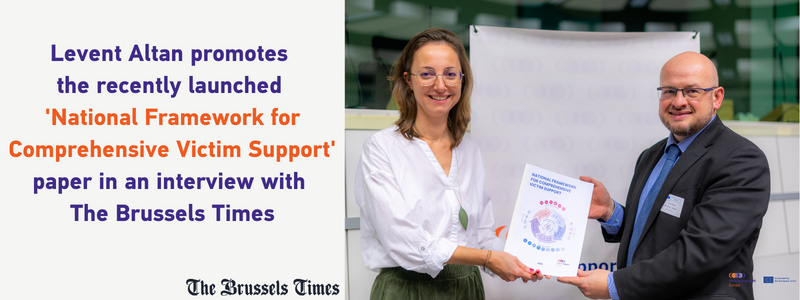Modern Society – Creating new challenges for Victim Support Groups

As a former Police Officer with 40 years’ experience of working with victims of crime and, since my retirement from An Garda Siochana in 2017, have been working on a voluntary basis as an Advocate for crime victims, I want to highlight what I believe is an additional challenge for Victim Support organisations everywhere.
While acknowledging the huge advancements that have taken place in the area of victim advocacy over the past 46 years an increasingly complex, changing society constantly produces new challenges. In my opinion the most serious challenge facing society today is the existential threat posed by Organised crime gangs and their related Illicit activities.
In the SOCTA report for 2021 Catherine De Bolle, the Head of Europol, stated: “I am concerned by the impact of serious and organised crime on the daily lives of Europeans, the growth of our economy, and the strength and resilience of our state institutions. I am also concerned by the potential of these phenomena to undermine the rule of law”
This is largely but not entirely fuelled by Drug trafficking where at first glance it would appear that the only real victims are drug addicts, those who have been robbed or assaulted by drug addicts, and persons who have been trafficked. However, in my experience the reality is that victimisation goes far deeper and impacts the lives of a great many innocent people.
These are the people who I call the “The Hidden Victims”. They have no voice and are afraid to speak out for a variety of reasons. They consist of family members of drug addicts who not alone have to live with those consequences and are in many cases subject to threats of violence and intimidation from gang members where debts are owed. These threats often result in parent’s houses being attacked, set on fire or having shots fired at them. In addition, entire vulnerable communities live in constant fear from the activities of gang members in their areas.
It is a common practise for crime bosses to seek out and identify vulnerable persons to exploit as Drug Mules. These people tend to be law-abiding citizens who, for various reasons, have been drawn into the criminal’s web.
This category includes young students and other vulnerable people who have been tempted or persuaded to engage in criminal activity by allowing criminals to launder money through their bank accounts for remuneration or have been intimidated into allowing criminals to use their personal details to obtain passports and driving licences.
One of the most worrying trends that I have witnessed is the increasing use of impressionable children as young as 8 or 9 years of age from working class areas who are being groomed to participate in gangland activity. They are very often deployed as look outs or couriers. This is a very worrying development as children so young and vulnerable are easily impressed by the bling lifestyle of local criminals and are ultimately not responsible for their actions.
Another worrying dimension to this problem is that innocent children now regularly witness extreme violence and shootings on the local streets where they play. This not only causes lifelong severe trauma for children, it also impacts negatively on lives of innocent families and society as a whole.
Another example of the Hidden victim are the people who work in areas of strategic interest to crime bosses such as those employed in transporting goods, or who work in Airports and Ferry ports.
From my perspective it is absolutely critical that Government departments and Victims’ Rights Groups work together in a coordinated manner to address these challenges and use every tool available to them to reach out to these silent victims, protect them and win their trust.
John O’ Mahony
Retired Assistant Commissioner An Garda Siochana (Irish Police)
Board Member AdVIC (Advocates for families of Homicide Victims)



